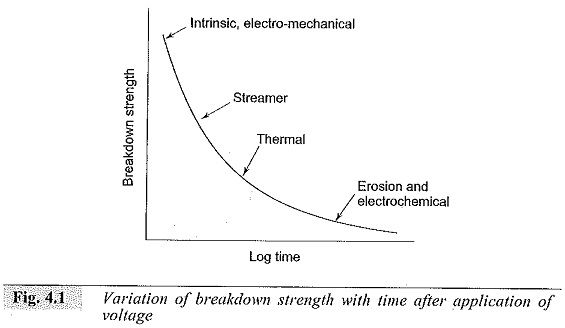Solid Dielectric Materials:
Solid dielectric materials are used in all kinds of electrical apparatus and devices to insulate one’current carrying part from another when they operate at different voltages, A good dielectric should have low dielectric loss, high mechanical strength, should be free from gaseous inclusions, and moisture, and be resistant to thermal and chemical deterioration. Solid dielectrics have higher breakdown strength compared to liquids and gases.
Solid insulating materials, which are generally used in practice, are of two types, namely the organic materials, such as paper, wood and rubber, and the inorganic materials, such as mica, glass and procelain, and synthetic polymers, such as perspex, PVC, epoxy resins etc. Some important properties of these materials which are used for insulation purposes in high voltage apparatus.
Studies of the breakdown of solid dielectrics are of extreme importance in insulation studies. When breakdown occurs, solids get permanently damaged while gases fully and liquids partly recover their dielectric strength after the applied electric field is removed.
The mechanism of breakdown is a complex phenomenon in the case of solids, and varies depending on the time of application of voltage as shown in Fig. 4.1. The various breakdown mechanisms can be classified as follows:
- intrinsic or ionic breakdown,
- electromechanical breakdown,
- failure due to treeing and tracking,
- thermal brealcdown,
